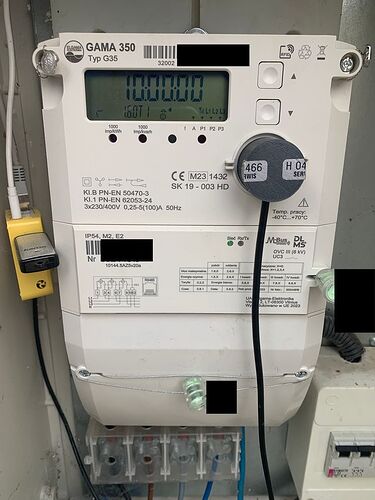The first question is, which DSO has provided the meter.
You image shows clearly that it has W-MBUS, so that should be your method.
All the modern meters installed in Poland are communicating in an encrypted manner, so you will be unable to read anything from that IR port, as that would have likely use DLMS/COSEM and the previous unencrypted IEC 62056-21 is not available anymore.
DLMS/COSEM requires an decryption key and authentication, which you will never get from any of the DSOs, because that is the way how they program the meters, and worried about that someone would reprogram it.
So as W-MBUS, you will need a W-MBUS readed, either an ESP device with the right receiver or a RTLSDR connected to a computer as receiver. But first of all you need that the DSO would activate the W-MBUS communication and would provide you with a decryption key.
Stoen, PGE and Tauron do provide these keys and turns on the W-MBUS on request. ENERGA is different story, becasue their meters have a USB based communication modul, and have not heard from anybody yet, who would have W-MBUS installed.
ENEA is a dead end currently. They just send a prewritten answer that they have time till 2031 to adapt their meters, which were tendered or purchased before 2022, basically all of them which they are installing currently. I have not heard any newer meters, despite there was a tender out for those in the beginning of this year.
So, which DSO, then you need to get W-MBUS turned on, and a decryption key to be able to decode the data.
Let us know, and we will be able to guide you to the right direction. Both hardware and software.
![]()
